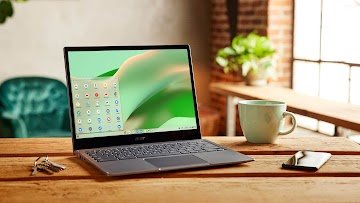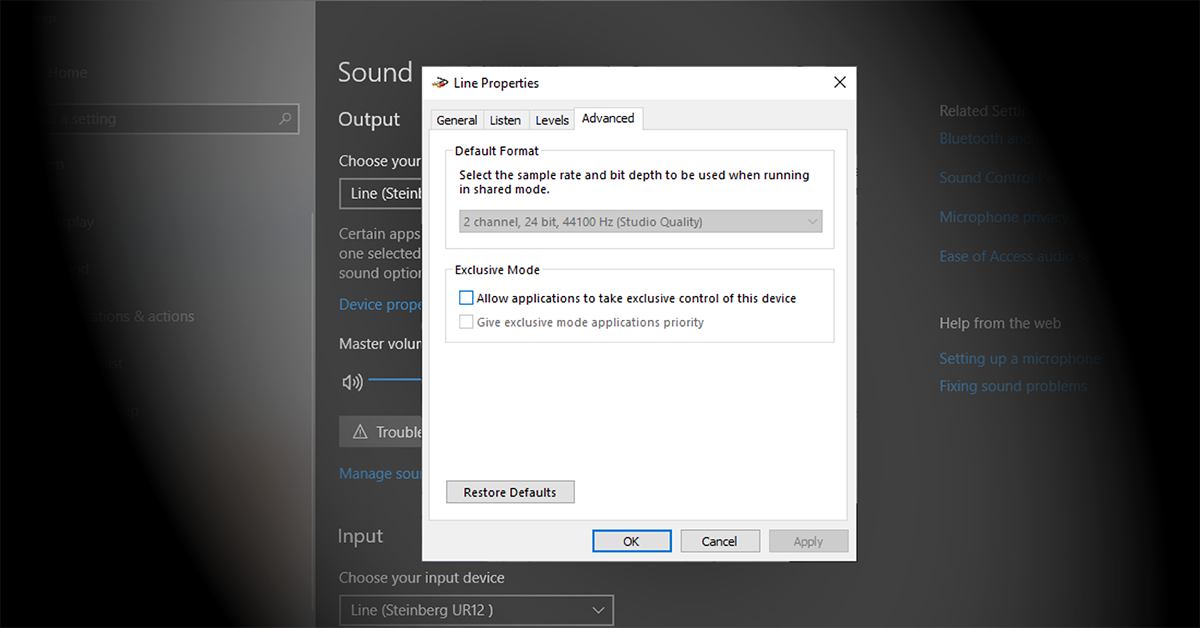To configure Windows 10 for auto-login without a password, access the Run dialog by pressing Win + R, then type “netplwiz” and press Enter. Uncheck the option “Users must enter a username and password to use this computer,” and click Apply.
This will prompt for your current password, which you’ll need to enter. Once confirmed, restart your computer to automatically log in without a password. Configuring Windows 10 for auto-login without the need to enter a password can save time and streamline the user experience.
By following a few simple steps, you can set up your computer to bypass the login screen, allowing for faster access to your system. This convenient feature is particularly useful for personal computers where security is less of a concern. In this guide, we’ll walk you through the process of configuring Windows 10 for automatic login without the need for a password, allowing for seamless and hassle-free access to your computer.
Credit: www.google.com
Why Use Windows 10 Auto Login?
Windows 10 Auto Login is a convenient feature that allows users to access their computer without the need to input a password every time. This can save time, particularly for personal devices that are not shared with others. It enhances convenience and offers time-saving benefits, making it an appealing option for many users.
Enhanced Convenience
Auto Login in Windows 10 simplifies the login process, ensuring that users can access their accounts without the hassle of entering a password each time they start their computer. This is particularly useful for personal devices, providing a seamless experience for the user.
Time-saving Benefits
By configuring Auto Login in Windows 10, users save valuable time that would otherwise be spent typing in a password. This is especially beneficial for individuals who frequently access their devices throughout the day, as it eliminates unnecessary interruptions to their workflow.
Credit: www.lifewire.com
Step-by-step Guide To Configure Windows 10 Auto Login:
Step-by-step guide to configure Windows 10 Auto Login:
Accessing The User Accounts Settings
Once you are logged into your Windows 10 desktop, open the Run dialog box by pressing Windows + R keys. In the Run dialog box, type netplwiz and press Enter. This will launch the User Accounts window.
Enable Automatic Login
From the User Accounts window, ensure that the “Users must enter a user name and password to use this computer” checkbox is unchecked. Next, select the user account for which you want to enable automatic login, and then uncheck the option that says “Users must enter a user name and password to use this computer.” Select Apply.
Disabling Password Prompt During Startup
To disable the password prompt during startup, you will be asked to enter the password associated with your selected user account twice for verification. Once entered, click on OK.
Security Considerations To Keep In Mind:
Ensure Windows 10 auto-login is configured without passwords for enhanced security measures. Lower the risk of unauthorized access and simplify the login process without compromising your system’s safety.
Balancing Convenience And Security
When it comes to configuring auto login without a password on your Windows 10 device, it’s important to strike a balance between convenience and security. While auto login can save you time and effort, it can also potentially compromise the safety of your personal information. By understanding and implementing the right security considerations, you can enjoy the convenience of auto login while keeping your device and data protected.
Implementing Additional Security Measures
To enhance the security of your auto login setup, consider implementing additional measures that can further safeguard your device. These measures help reinforce the protective barriers around your personal information, reducing the risks associated with potential unauthorized access.
Below are some recommended security measures you can implement to maximize the security of your auto login:
- Enable strong and unique passwords: Ensure that the password associated with your user account is strong and different from passwords used on other platforms.
- Use a password manager: Consider utilizing a reliable password manager to generate and store complex passwords securely.
- Activate two-factor authentication (2FA): Enable 2FA for your Microsoft account, adding an additional layer of protection by requiring a second verification step.
- Regularly update your operating system: Installing updates promptly helps ensure that your device is equipped with the latest security patches and bug fixes.
- Enable a firewall: Activate the built-in Windows Firewall or consider using a third-party firewall to monitor and control network traffic.
- Utilize encryption: Encrypting your sensitive data helps make it unreadable to unauthorized individuals, providing an extra level of protection in case of a security breach.
By implementing these additional security measures, you can significantly strengthen the security of your auto login configuration, reducing the potential risks associated with unauthorized access to your Windows 10 device.
Troubleshooting Common Issues:
While configuring Windows 10 auto login without a password is a convenient feature, it is not uncommon to encounter some common issues along the way. In this section, we will address these issues and provide simple solutions to troubleshoot them.
Incorrect Login Credentials
If you are unable to log in automatically to your Windows 10 account, the first thing to check is whether you have entered the correct login credentials. It is crucial to enter both the username and password accurately to ensure a successful automatic login.
If you’ve recently changed your password, it’s possible that you are still using the old one. Make sure to update your credentials in the Windows 10 settings to match the new password. Keep in mind that passwords are case-sensitive, so double-check your capitalization.
If you’re unable to remember your login details, try retrieving them using the “Forgot password” option. Windows 10 provides a straightforward process to regain your access and configure auto login with the correct credentials.
Password Prompt Reappearing
One common issue that users often face when configuring auto login on Windows 10 is the reappearance of the password prompt every time they start their computer. This can be frustrating, but worry not, as it is usually resolved by adjusting a simple setting.
To stop the password prompt from reappearing, you need to disable the Windows 10 sign-in screen. Follow these steps:
- Press Windows + R to open the Run dialog box.
- Type “netplwiz” and press Enter.
- In the User Accounts dialog box, uncheck the box that says “Users must enter a username and password to use this computer.”
- Click on the Apply button and enter your current password if prompted.
- Restart your computer, and you should now bypass the password prompt during automatic logins.
By following these steps, you can eliminate the hassle of entering your password each time you start your Windows 10 device.
Remember, troubleshooting these common issues does not require advanced technical knowledge. With the right guidance, you can overcome any hurdles and fully enjoy the convenience of Windows 10 auto login without a password.
Alternatives To Windows 10 Auto Login:
If you prefer not to use the Windows 10 auto login feature or if it is not available on your device, there are alternative methods you can explore for seamless login experiences. Here are two popular options:
Using Pin Or Facial Recognition:
If you want a quick and secure way to log in to your Windows 10 device without typing a password, you can set up a PIN or use facial recognition. These methods provide convenient alternatives to traditional passwords.
Using a PIN is particularly useful as it allows you to log in with just a few numbers, making it easier to remember compared to longer passwords. Facial recognition, on the other hand, utilizes your device’s camera to identify your face and grant access to your account.
To set up a PIN or enable facial recognition, follow these steps:
- Open the ‘Settings’ from the Start menu.
- Select ‘Accounts’ and then ‘Sign-in options’.
- Under the ‘Manage how you sign in to your device’ section, you can choose either ‘Windows Hello PIN’ or ‘Windows Hello Facial Recognition’. Click on the desired option.
- Follow the on-screen instructions to set up your PIN or facial recognition. Ensure you choose a PIN that is easy for you to remember while remaining secure.
- Once the setup is complete, you can use your new login method to access your Windows 10 device effortlessly.
Third-party Auto Login Software:
In addition to the built-in Windows 10 features, various third-party software solutions are available that can conveniently automate the login process. These tools offer additional customization options and advanced security features.
When choosing third-party auto login software, make sure to select a reputable provider that offers frequent updates and has positive user reviews. Some popular options include LastPass, Dashlane, and RoboForm. They not only facilitate easy login but also provide password management features for added security.
With third-party auto login software, you can streamline your login experience and enhance your overall productivity. Simply install the selected tool, configure the settings according to your preferences, and enjoy seamless access to your Windows 10 device.
:max_bytes(150000):strip_icc()/how-do-i-auto-login-to-windows-2626066-c77a9a2e381146b8a22f558b00dc6564.png)
Credit: www.lifewire.com
Frequently Asked Questions Of Configure Windows 10 Auto Login Without Password
Faq 1: How Do I Configure Auto Login In Windows 10 Without Using A Password?
Auto login in Windows 10 without a password can be configured by following these steps:
1. Press the Win + R key to open the Run dialog box. 2. Type “netplwiz” and click OK to open the User Accounts window. 3. Uncheck the option “Users must enter a user name and password to use this computer.” 4. Click Apply, and enter your password twice to confirm. 5. Click OK and restart your computer. Windows will now automatically log you in without using a password.
Faq 2: Is It Safe To Set Up Auto Login In Windows 10 Without A Password?
Setting up auto login without a password is convenient, but it can compromise the security of your computer. Without a password, anyone can access your files and personal information if they gain physical access to your computer. It is recommended to use a strong password or other security measures to protect your data.
Faq 3: How Can I Disable Auto Login In Windows 10?
To disable auto login in Windows 10, follow these steps:
1. Press the Win + R key to open the Run dialog box. 2. Type “netplwiz” and click OK to open the User Accounts window. 3. Check the option “Users must enter a user name and password to use this computer.” 4. Click Apply and enter your password twice to confirm. 5. Click OK and restart your computer. Windows will now prompt you for a password during login.
Faq 4: Can I Enable Auto Login For A Specific User Account In Windows 10?
Yes, you can enable auto login for a specific user account in Windows 10. Follow these steps:
1. Press the Win + R key to open the Run dialog box. 2. Type “netplwiz” and click OK to open the User Accounts window. 3. Uncheck the option “Users must enter a user name and password to use this computer.” 4. Select the user account you want to enable auto login for. 5. Click Apply and enter the password for the selected user account twice to confirm. 6. Click OK and restart your computer. Windows will now automatically log in to the selected user account without using a password.
Conclusion
If you want to streamline your Windows 10 experience and avoid the hassle of entering a password every time you log in, configuring auto-login is the way to go. By following the simple steps mentioned in this blog post, you can bypass the password prompt and save time and effort.
With auto-login enabled, you’ll have immediate access to your computer, making your Windows 10 experience even more convenient. So, why wait? Configure auto-login today and enjoy a password-free login process.



